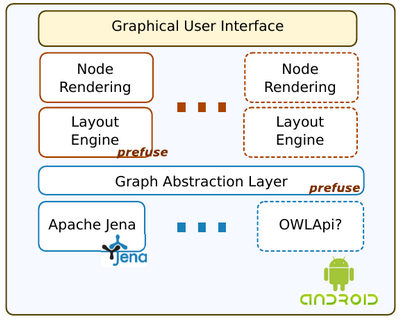GNomon mini games
- Details

GNomon is a framework that enables the creation of accessible and dynamic one-switch video games. It is based on the NOMON interaction modality, which allows to select one of many elements from the screen without extra special hardware (e.g., eye trackers) and without requiring them to be arranged in any particular configuration or to be stationary.
Dog
- Details

Dog is an open source, OSGi compliant implementation of smart environment gateway and IoT platform featuring multi-protocol capabilities, REST-based application APIs, uniform device representation, rule-based activations, real-time data elaboration (with complex event processing technologies), Xively integration (to enable social sharing of consumptions and activations), etc.
DogOnt
- Details

DogOnt is a novel modeling language for Smart Environments and IoT settings, based on Semantic Web technologies. By adopting well known representations such as ontologies and by providing suitable reasoning facilities, DogOnt is able to face interoperation issues allowing to describe: where a device is located; the set of capabilities of a device; the technology-specific features needed to interface the device; the possible configurations that the device can assume; how the building environment is composed; what kind of architectural elements and furniture are placed inside the environment.
spChains
- Details

A stream-processing framework, based upon state-of-the-art stream processing engines, which enables declarative and modular composition of stream processing chains built atop of a set of extensible stream processing blocks. While stream processing blocks are delivered as a standard, yet extensible, library of application-independent processing elements, chains can be defined by the pervasive application engineering team.
Jelly-Ont
- Details

Jelly-Ont is a new ontology browsing application for Android. Jelly-Ont exploits a layered architecture aimed at decoupling ontology access primitives from graph representation engines and from node-layout algorithms. At the lower layer, ontology access is handled by full-blown, well established ontology APIs such as Jena (see Apache Jena on Android), OWL API, etc. The ontology model exposed by such APIs is then abstracted into a shared graph representation, designed taking inspiration from the Prefuse Information Visualization toolkit architecture. This shared representation offers standard query primitives to layout algorithms, thus enabling them to get the information needed to successfully set-up an ontology visualization.
Apache Jena on Android
- Details
Several time ago we were involved in a project using ontologies on Android-based mobile devices. We firstly tried the Androjena project (http://code.google.com/p/androjena/) but it's development is almost ceased and it supports only a subset of the Jena features. Therefore we tried to use the full Apache Jena project on Android. While the project is not directly working, we analyzed the issues and we came out with a fully working copy of Apache Jena on Android.

